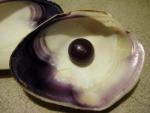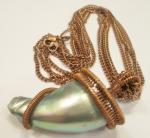Blue Mussels in Svalbard at the Top of the World
I, Kari, have personally been to Svalbard. The main city, Longyearbyen is on the 78° parallel. For comparison, the North Pole is on the 90° parallel. A fascinating place and I loved snowmobiling and dog sledding. I was thrilled to find out there are blue mussels there!
__________________
When blue mussels were discovered alive and well on Spitsbergen in 2004, it was a sensation, as mussels had been absent since the time of the Vikings. Closer study shows that some of the mussels found in Svalbard today come all the way from the Mediterranean. This astonishes scientists.
“The marine ecosystem up here in the north is constantly exposed to a natural invasion from the south. This is mainly because the northern part of the Gulf Stream system flows into our waters and keeps Svalbard’s fjords warm and ice-free through the long, cold winter”
— says Jørgen Berge, professor of biology at UiT The Arctic University of Norway.
The first observation of living mussels in Svalbard was made in 2004 at Sagaskjæret furthest out in Isfjorden. Since then, scientists have found mussels in several places in both Isfjorden and Kongsfjorden.
“Even the first time we observed mussels at Sagaskjæret, we assumed that this was a result of small larvae being transported northwards and into Isfjorden via the Gulf Stream system. We thought they came from the closest site, which means from the area around Lofoten”, says Berge
At that time, genetic studies indicated that it was the common mussel, Mytilus edulis, that had spread northwards from northern Norway. However, the scientists had insufficient data to draw firm conclusions. Now, more than ten years later, new mussel finds give them an opportunity for more exhaustive study.
SOURCE: https://www.jonaa.org/content/2017/10/12/the-blue-mussels-around-svalbard-have-come-a-long-way
Join in and write your own page! It's easy to do. How? Simply click here to return to Pearl News.



